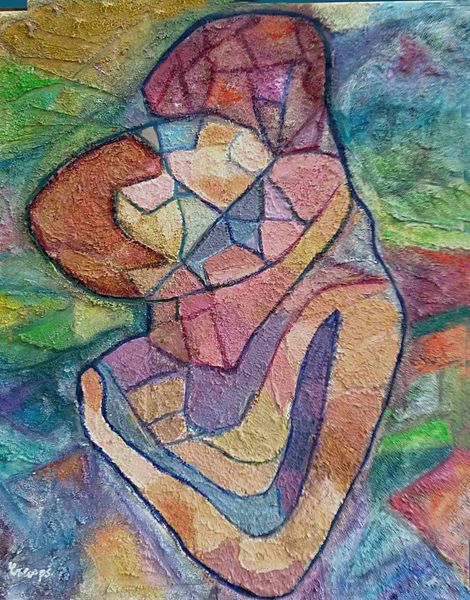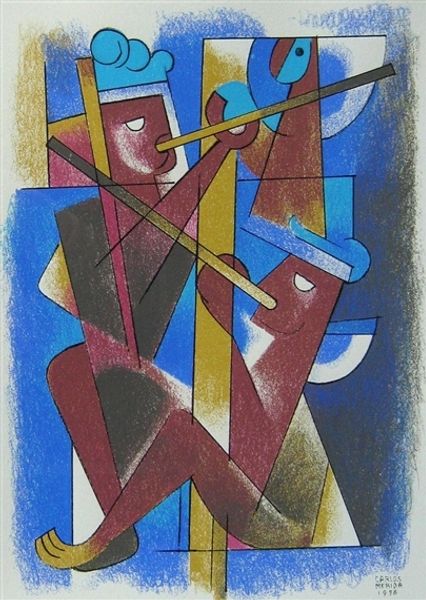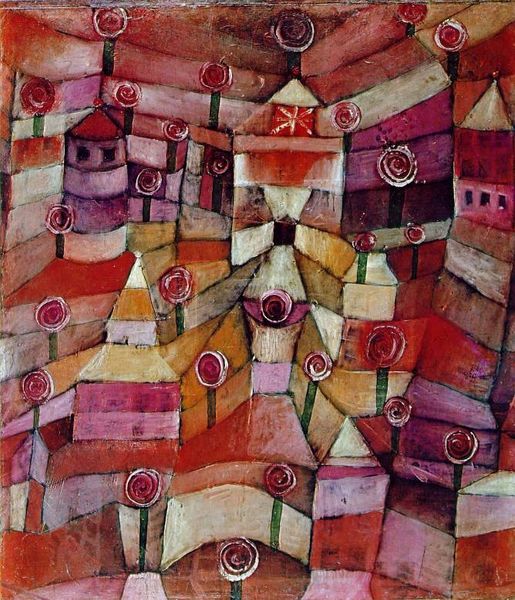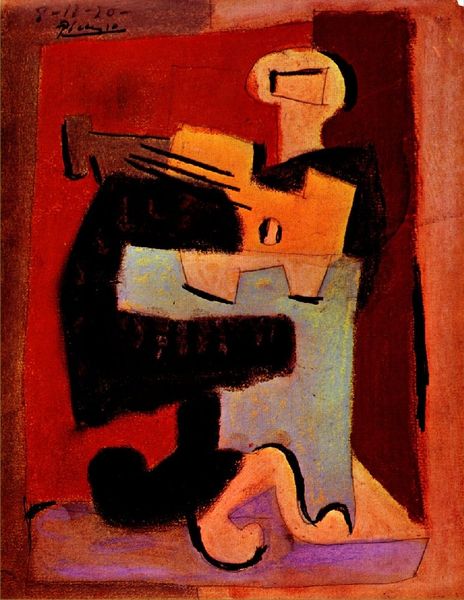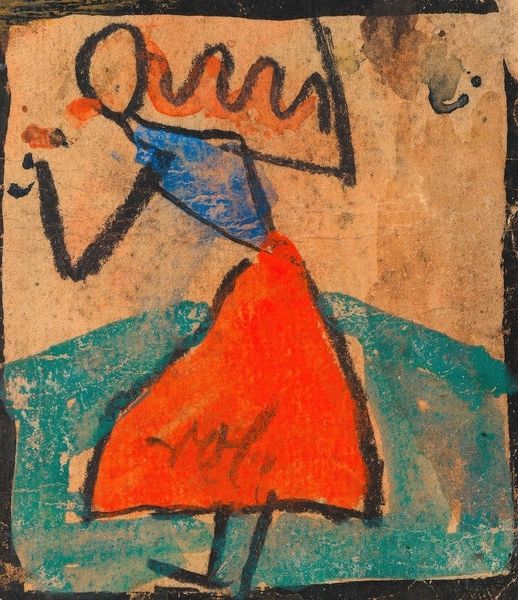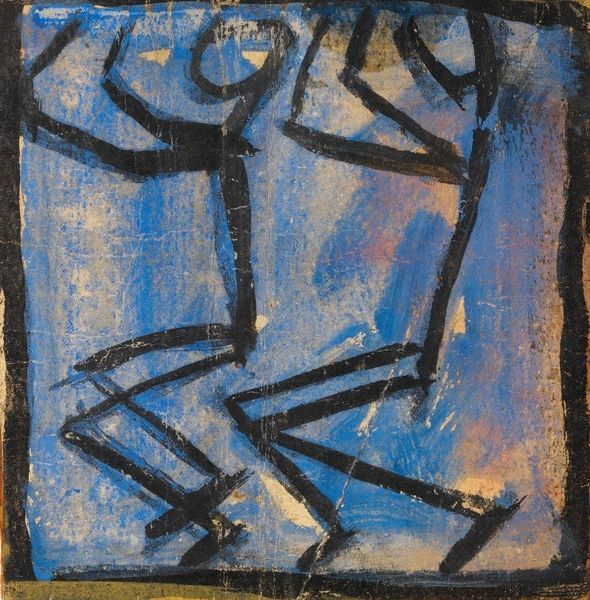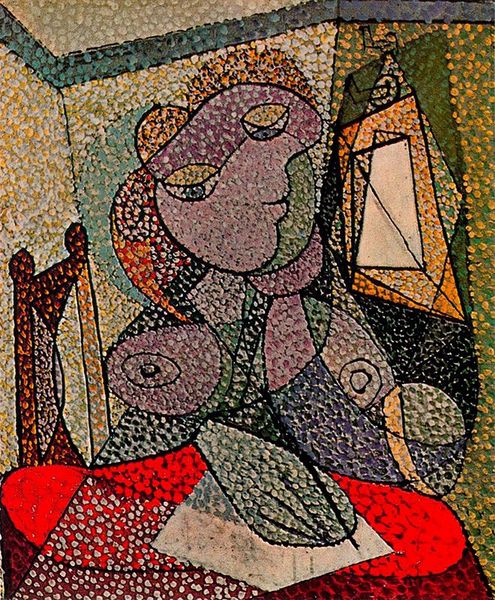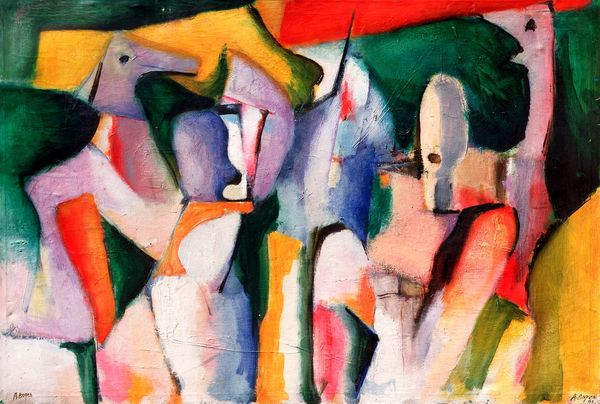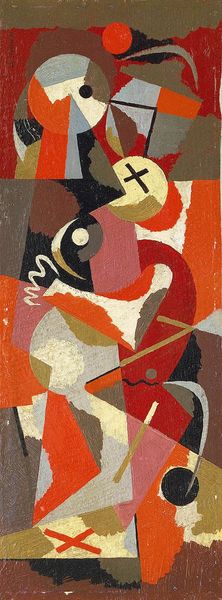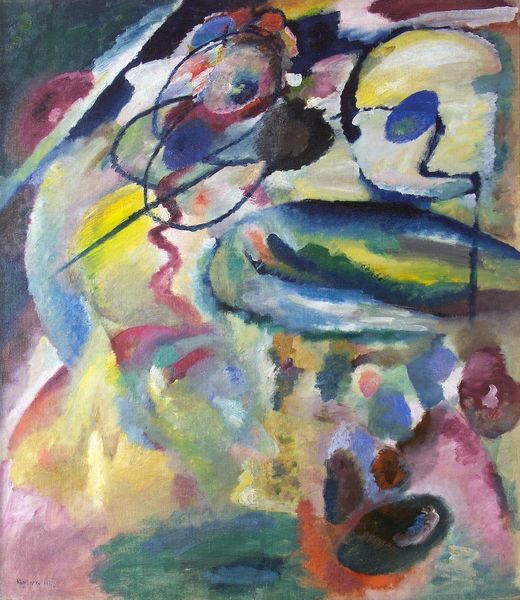
painting, watercolor
#
portrait
#
tree
#
abstract painting
#
painting
#
figuration
#
watercolor
#
expressionism
#
abstraction
#
line
#
watercolour illustration
#
mixed medium
#
modernism
#
watercolor
Copyright: Public domain
Curator: Let's take a moment to appreciate Paul Klee's 1921 watercolor and mixed media work, "Diana in the Autumn Wind." What are your initial impressions? Editor: It has a very delicate, almost ethereal quality. The color palette is muted, the lines are light, creating this sensation of transience or gentle movement. A melancholic breeze seems to permeate the piece. Curator: Klee often employed watercolor for its luminosity and fluidity, fitting for a representation of movement, right? Beyond the obvious autumnal reference in the title, I'm drawn to the interplay between the subject and the medium itself. How Klee uses the watercolor washes against pen and ink—it's about contrasting fragility with the discipline of linear structure. Editor: Precisely. Notice the layered effect and how it suggests shifting forms. It creates a tension between definition and dissolving form that mirrors the effects of wind. The layering is deliberate and is reinforced through repetition. There's a visible pattern to the color choices, almost echoing back and forth from head to feet. It looks to me like this adds a rhythm across the whole work. Curator: Consider the social context during the time Klee was developing this piece. The devastation of the First World War hung heavily over Europe. So this fragile image—a figure swept up by forces beyond her control, rendered in ephemeral materials— might mirror anxieties of that era. Editor: Interesting! Thinking of it from the viewer’s point of view, the lack of detail is striking. The eye moves, creating depth but obscuring clear understanding. Is the point here, perhaps, not that she has form, but that she will eventually cease to have it? I mean that as she has only recently appeared, so she may just disappear from sight again. Curator: That's a perceptive point about the material vulnerability suggesting the individual vulnerability. Thank you for highlighting such key details, and the impact of Klee's selection of materiality when thinking of that moment in the art historical landscape. Editor: Indeed, it's these artistic elements of his piece which highlight a transient quality to Klee's exploration of form and feeling. It’s a testament to his skill in balancing abstract structure with symbolic depth, while also revealing some truths about the historical conditions he operated within.
Comments
No comments
Be the first to comment and join the conversation on the ultimate creative platform.
